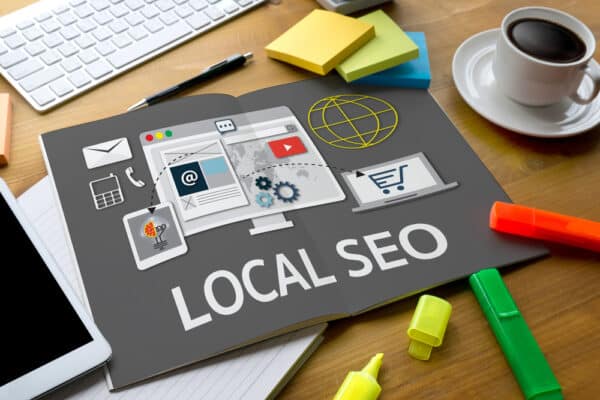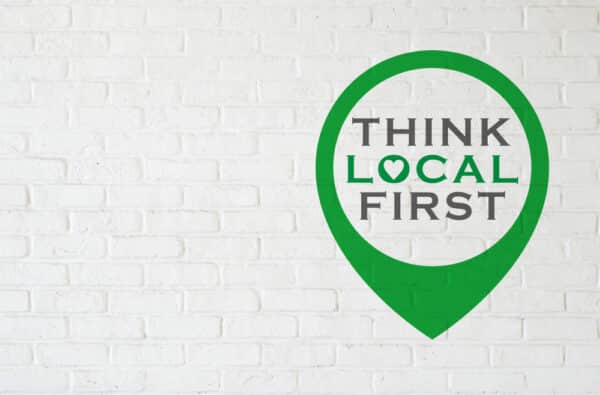
Local SEO Best Practices: Boosting Your Local Business Online
Local SEO is the cornerstone for businesses aiming to capture a regional audience. In today’s digital age, consumers frequently turn to search engines to find nearby services and products. Local SEO ensures that your business stands out in these searches, connecting you directly with potential customers in your vicinity.
By optimizing for local search, businesses not only increase their online visibility but also drive foot traffic, boost sales, and foster community engagement.
This article delves into the best practices of local SEO, providing actionable strategies for businesses to solidify their local online presence and outshine the competition.
Optimize Your Google My Business (GMB) Listing
When it comes to local SEO, Google My Business (GMB) stands as a beacon for businesses aiming to enhance their local online visibility. This free tool offered by Google serves as a digital storefront, allowing businesses to present themselves effectively to potential customers searching online.
Having an optimized GMB is a must-have part of a local SEO strategy.
Claiming and Verifying: The first step is to claim your business listing. If you haven’t done so, it’s akin to leaving a valuable asset unattended. Once claimed, it’s essential to verify the listing, ensuring that Google recognizes you as the legitimate owner. This process typically involves receiving a postcard from Google with a verification code.
High-Quality Images and Videos: A picture speaks a thousand words. By uploading crisp, high-resolution images and videos of your establishment, products, or services, you provide potential customers with a visual insight into what to expect. This not only enhances your listing’s appeal but also builds trust.
Encouraging and Responding to Reviews: Reviews are the lifeblood of local SEO. Positive reviews can significantly boost your business’s credibility. Encourage satisfied customers to share their experiences. However, it’s not just about accumulating reviews; responding to them is equally crucial. Whether it’s a glowing commendation or constructive criticism, a thoughtful response showcases your dedication to customer satisfaction.
Keeping Information Up-to-Date: Businesses evolve, and so should their GMB listings. Whether it’s a change in operating hours, a new phone number, or an updated address, ensuring that your GMB information is current is paramount. Outdated information can lead to missed opportunities and frustrated customers.

Prioritize Local Keyword Research
Local keyword research is the foundation upon which successful local SEO campaigns are built. It’s the process of identifying the specific terms and phrases that potential customers in your area are using to search for products or services similar to yours. By understanding and leveraging these keywords, businesses can tailor their content and strategies to meet local demand, ensuring they appear prominently in search results.
Understanding Local Search Intent: At the heart of local keyword research is discerning the intent behind searches. For instance, someone searching for “best Italian restaurant near me” is likely looking for dining options, while “Italian restaurant menu prices” indicates a desire for specific information. Recognizing these nuances allows businesses to create content that directly addresses users’ needs.
Using Keyword Research Tools: There’s a plethora of tools available to aid in local keyword research. Google’s Keyword Planner is a staple, offering insights into search volumes and competition levels for specific terms. Platforms like Moz’s or ahref’s Keyword Explorer provide additional layers of data, including keyword suggestions based on local search trends.
Incorporating Local Landmarks and Popular Terms: Localizing your keyword strategy goes beyond just adding “near me” or the name of your city. Think about local landmarks, neighborhoods, festivals, or colloquial terms unique to your area. For example, a coffee shop near the Golden Gate Bridge might consider terms like “coffee near Golden Gate” or “Golden Gate Bridge café.”
Create High-Quality Local Content
Content is the lifeblood of any SEO strategy, and when it comes to local SEO, it’s crucial to produce content that resonates with your local audience. By crafting content that’s both relevant to your business and tailored to local interests, you can establish your brand as a trusted community resource.
Blog Posts About Local Events or News: One of the most effective ways to engage with a local audience is by covering events or news in your area. Whether it’s a local festival, a charity event you’re sponsoring, or a significant community development, writing about these topics not only showcases your involvement but also aligns your brand with local happenings. For instance, a local bakery might write about a pie contest they’re hosting during a town fair.
Localized Landing Pages: If your business operates in multiple locations, creating separate landing pages for each area can be beneficial. These pages can be optimized for specific local keywords and provide information tailored to residents of that area. For example, a chain of fitness centers might have dedicated pages for each branch, highlighting local classes, trainers, or member testimonials.
Case Studies Featuring Local Clients: Showcasing success stories of local clients or customers can be a powerful way to build trust. These case studies can highlight how your product or service has benefited residents or businesses in the area. A local landscaper, for instance, could detail a garden transformation in a nearby neighborhood, complete with before-and-after photos.
Optimize for Mobile Search
The rise of smartphones has revolutionized the way consumers search for local businesses. With the world at their fingertips, people often turn to their mobile devices to find nearby services, restaurants, shops, and more. For local businesses, optimizing for mobile search isn’t just beneficial—it’s essential.
Importance of Mobile Optimization: Mobile searches often come with a high intent to purchase or visit. Someone searching for “best pizza place near me” on their phone is likely on the go, possibly even walking your street, looking for a quick bite. If your website isn’t optimized for mobile, you risk losing this potential customer to a competitor whose site offers a better mobile experience.
Responsive Design and Fast Loading Times: A responsive design ensures that your website looks and functions well on devices of all sizes, from desktop monitors to smartphone screens. But it’s not just about appearance; speed is crucial. Mobile users are often impatient, and a site that takes too long to load can deter potential customers. Tools like Google’s PageSpeed Insights can help identify areas for improvement.
Mobile-Friendly Features: Think about the user’s journey on your site. Features like click-to-call buttons, easy-to-use contact forms, and maps with directions can enhance the mobile user experience. Simplifying navigation and ensuring that essential information (like your business hours or address) is easily accessible can make a world of difference.
Encourage and Manage Online Reviews
In the digital age, online reviews have become the modern word-of-mouth, playing a pivotal role in shaping a business’s reputation. For local businesses, these reviews can significantly influence consumer decisions, making their management a top priority in a robust local SEO strategy.
Importance of Reviews in Local Search Rankings: Search engines, especially Google, factor in the quantity, quality, and recency of reviews when determining local search rankings. A business with numerous positive reviews is often perceived as trustworthy and reliable, leading to higher visibility in local search results. Moreover, potential customers frequently turn to reviews to gauge the quality of a product or service, with many trusting online feedback as much as personal recommendations.
Platforms to Focus On: While Google is the giant in the room, other platforms like Yelp, TripAdvisor, and Facebook also hold sway in various industries. Identifying where your target audience leaves and reads reviews is crucial. For instance, a local restaurant might prioritize Yelp and TripAdvisor, while a home services business might focus more on Google and Angie’s List.
Strategies for Encouraging Positive Reviews:
- Provide Exceptional Service: The foundation of positive reviews is, undoubtedly, offering top-notch service or products.
- Ask at the Right Time: Timing is key. Request reviews when the customer’s satisfaction is fresh, perhaps after a successful purchase or service completion.
- Make It Easy: Provide direct links to your review profiles in emails, on receipts, or even on your website.
- Offer Incentives: While you should never buy reviews, offering incentives like discounts or freebies for honest feedback can motivate customers.
Responding to Reviews: Engaging with reviews, both positive and negative, showcases your commitment to customer satisfaction. Thank your customers for positive feedback. For negative reviews, address concerns professionally, offering solutions and demonstrating your dedication to continuous improvement.

Build Local Citations and Backlinks
In the vast ecosystem of local SEO, citations and backlinks serve as powerful tools to boost your online visibility and credibility. While both involve references to your business on other websites, they play distinct roles in enhancing your local search rankings and overall online reputation.
Understanding Citations: A citation is any online mention of your business’s Name, Address, and Phone number (often referred to as NAP). These mentions can appear on local business directories, websites, or social platforms. Citations help search engines verify the existence and legitimacy of a business. The more consistent and widespread your citations are, the more credible your business appears to search engines.
Ensuring NAP Consistency: One of the most common pitfalls in local SEO is inconsistent NAP information across the web. Even minor discrepancies, like “St.” versus “Street,” can confuse search engines and dilute your local ranking power. Regularly auditing and updating your citations ensures consistency and maximizes their impact.
The Power of Backlinks: While citations mention your business details, backlinks are direct links from other websites to yours. Quality backlinks signal to search engines that your website is reputable and authoritative. In the context of local SEO, backlinks from local websites, news outlets, or community organizations are particularly valuable.
Strategies for Acquiring Local Backlinks:
- Engage in Community Events: Sponsoring or participating in local events can earn you backlinks from event pages or local news coverage.
- Collaborate with Local Bloggers: Partnering with local influencers or bloggers for guest posts or features can generate quality backlinks.
- Join Local Associations: Many local business associations or chambers of commerce offer online directories with opportunities for backlinks.
Leveraging Local Press: Local news outlets are always on the lookout for interesting stories. Pitching newsworthy aspects of your business, such as a significant milestone or community involvement, can lead to coverage and valuable backlinks.
In essence, citations and backlinks are the building blocks of your online reputation in the local digital landscape.
Optimize On-Page SEO Elements
On-page SEO, the practice of optimizing individual web pages to rank higher in search engines, is a cornerstone of any effective local SEO strategy. For local businesses, it’s not just about getting found—it’s about getting found by the right people in your vicinity. By refining on-page elements with a local focus, businesses can cater to a regional audience and drive more relevant traffic.
Title Tags, Meta Descriptions, and Headers with Local Keywords: These are among the first elements search engines evaluate. Incorporating local keywords, such as the city or neighborhood name, can significantly boost local search visibility. For instance, a title tag like “Organic Bakery in Downtown Austin” immediately signals to both search engines and users the locality and nature of the business.
Embedding a Google Map on Your Contact Page: An embedded map not only aids users in locating your business but also reinforces your location to search engines. It’s a simple addition that can enhance user experience and local SEO simultaneously.
Schema Markup for Local Businesses: Schema markup, a form of microdata, helps search engines understand the context of your content. For local businesses, using Local Business schema can provide search engines with detailed information about your business, like operating hours, location, and reviews. This can lead to richer search results, including snippets or knowledge panels that stand out.
Optimizing Images with Local Descriptors: Images can be powerful tools for local SEO when optimized correctly. Using descriptive file names and alt tags that include local keywords can improve image search rankings. For example, instead of “coffee.jpg,” use “Seattle-Capitol-Hill-Coffee-Shop.jpg.”
Localized Content on Key Pages: Ensure that essential pages, like your homepage or service pages, include content tailored to your local audience. Mention local landmarks, events, or community nuances that resonate with residents.
If you want help with your local SEO, contact Matt Colletta here.
